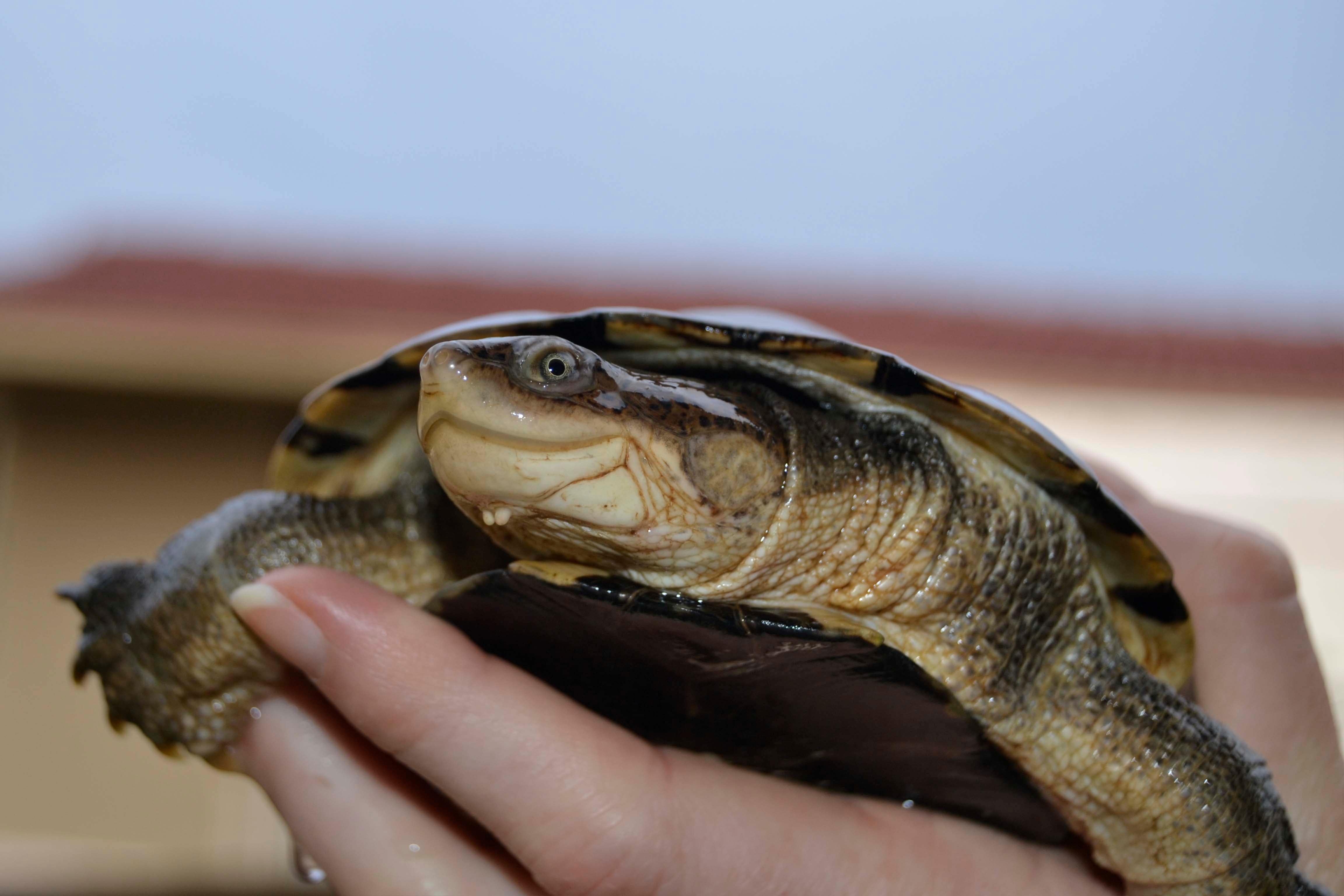Sideneck Turtle

Always Smiling
Few turtles look as happy as the African sideneck turtle. They typically have a dark brown shell, olive to brown skin with black markings on their head, and a mouth that looks like a permanent smile. They earned their name because they can't retract their heads fully into their shells, instead tucking them sideways.
They are fairly unique in appearance and moderate in size, growing to an average of 7 to 12 inches. Like other turtles, they have a long life expectancy (25 to 50 years) and require a long commitment. They require moderate care but can be suitable for beginners with proper attention.
Native Habitat
As the name suggests, African sideneck turtles originate from Africa. In the wild, they have one distinct advantage over other fellow turtles: their long neck. When flipped upside-down, these turtles can flip themselves back over using their neck muscles, an advantage that other turtles don’t have. They are also fairly social with other aquatic turtles.
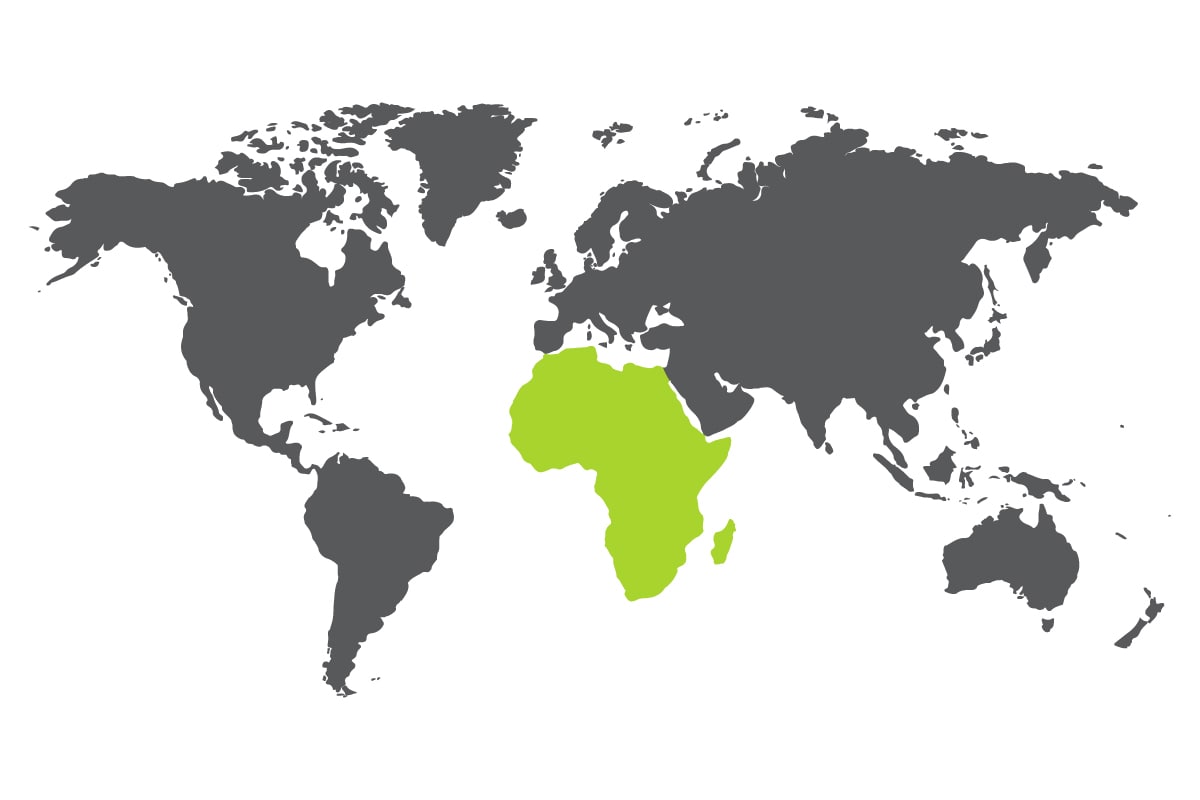
Recommended Housing And Accessories
Sideneck turtles need a spacious aquarium, ideally at least 75 gallons, with half to three quarters filled with water. The Aqueon Standard Glass Terrarium is a great option that comes in multiple sizes. A secure screen such as the Zilla Screen Cover with Center Hinge provides safety while also allowing for easy access to the tank.
A quality water filter is essential for cleanliness, like the Aqueon Quietflow® Canister Filter. In addition to keeping the water clean, you should dechlorinate the water by either letting it sit out for 24 hours before adding it to the tank or by adding a dechlorinating solution like Zilla Water Conditioner. A recommended pH of 6.5 (fairly neutral) should be maintained.
You can also try water care products Zilla Miracle Ball and Zilla PURE to help save time keeping your turtle’s environment healthy.
Turtles need to bask in order to warm up and regulate their metabolism. Provide a basking area with large rocks or accessories like the Zilla Freestanding Floating Basking Platform or Zilla Basking Platform Ramp.
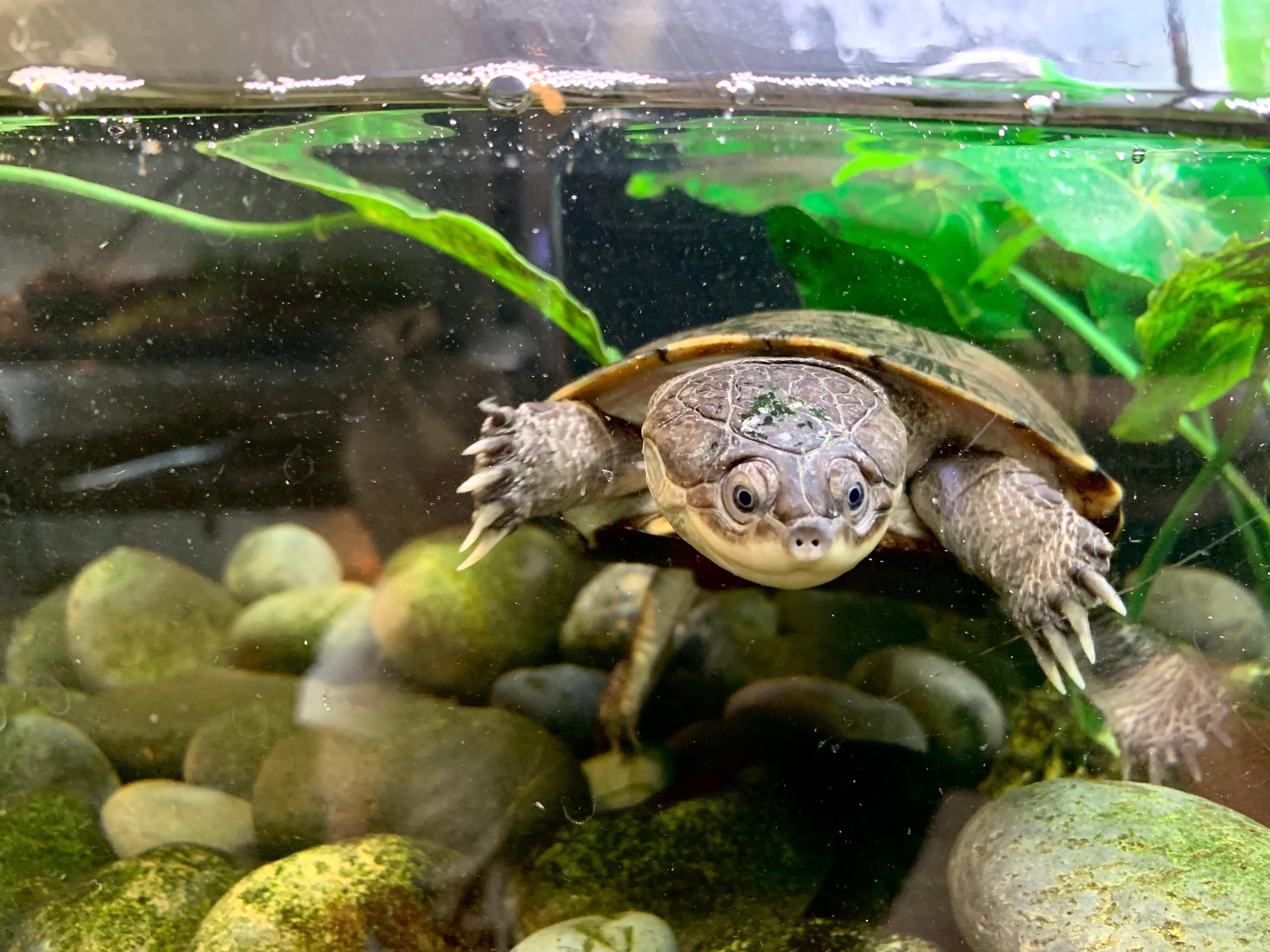
Temperature and Lighting
Use a heat lamp to help sideneck turtles maintain a healthy body temperature. Ambient temperature should be around 80˚F and basking temperature around 90˚F. Use bulbs like the Zilla Incandescent Spot Bulbs or Zilla Mini Halogen Bulbs to create healthy heat. You can also use heat emitters like the Zilla Aquatic Reptile Heater to help with consistent overall warmth.
UVA and UVB is a necessity for a healthy turtle. Indoor turtles require UVB lighting and supplemental heat lights for 10-12 hours a day. Make sure to provide access to UVA/UVB on basking platforms using any Zilla Fluorescent UVA/UVB bulb. Remember to replace bulbs every 6 months.
For more information on UV lighting, read Understanding UVA, UVB, and UVC Reptile Lighting.
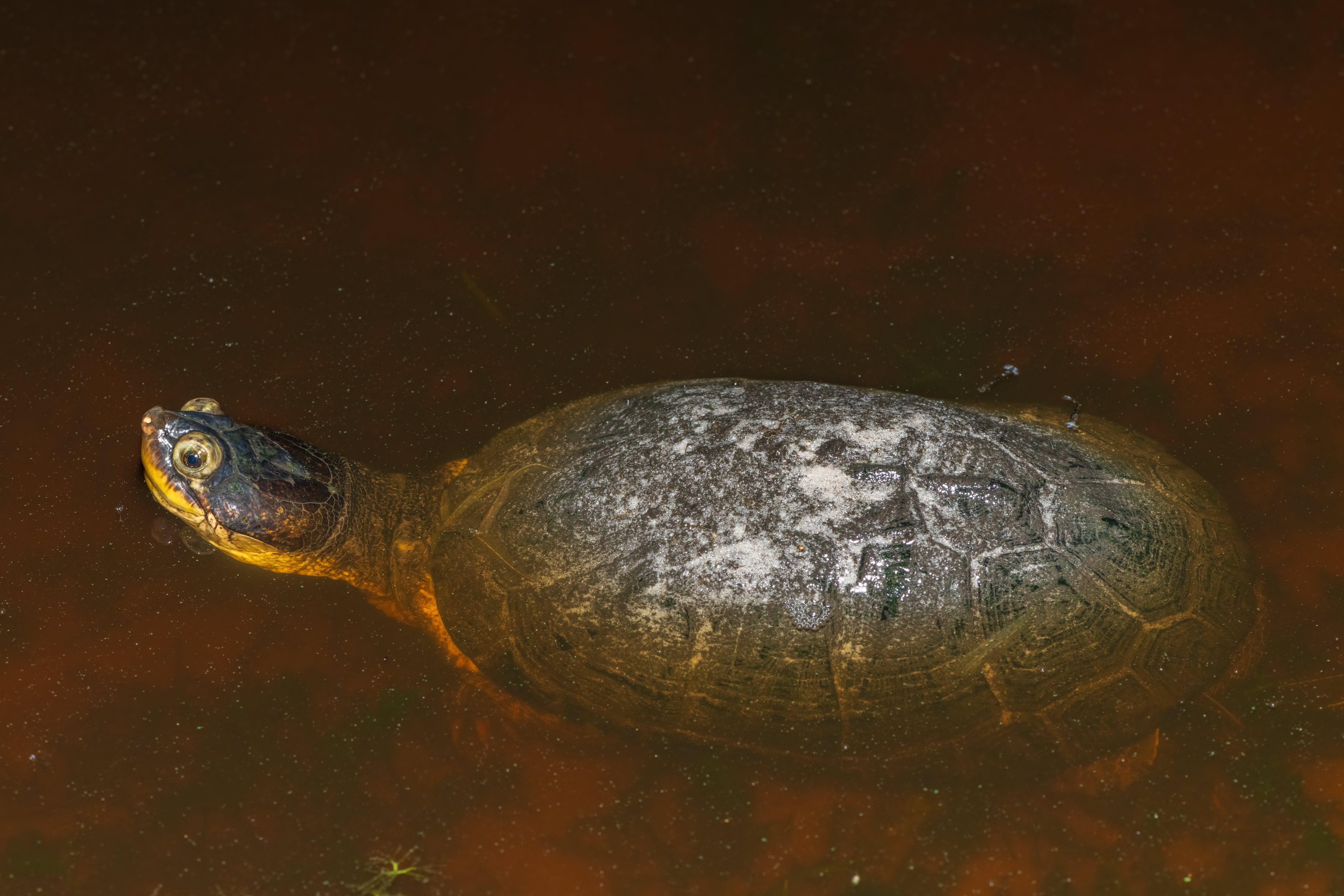
Feeding and Diet
Sideneck turtles are omnivores, eating plant material, insects, fish, and crustaceans, and will enjoy aquatic turtle pellets like Zilla Turtle Sticks. There are a variety of options made for turtles that will get them excited and give them something to swim after, like Zilla River Shrimp or Turtle Chasers.
Check the Zilla Feeding Guide for a list of appropriate food options.
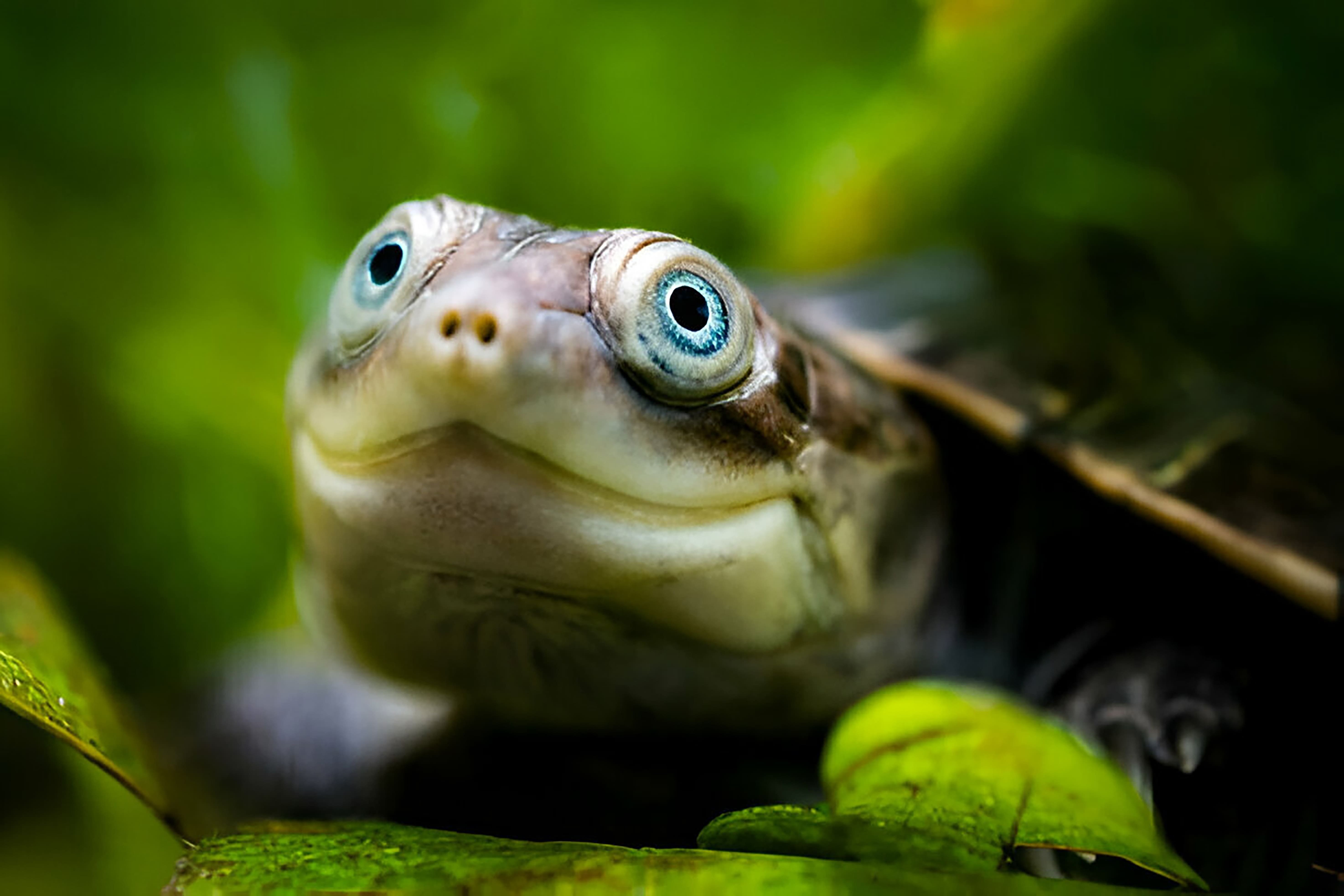
![]()
Handling
Over time, you will build a special connection with your turtle during feeding and caring for them in your daily interactions, but be cautious and gentle when it comes to picking them up. African sideneck turtles are not ideal for handling due to the stress it causes them and can potentially bite.
